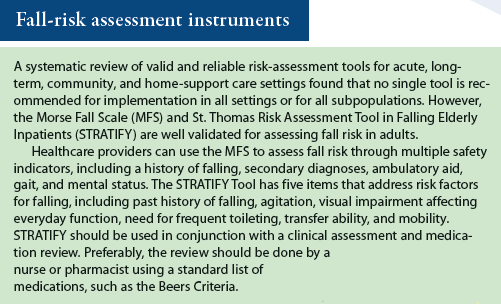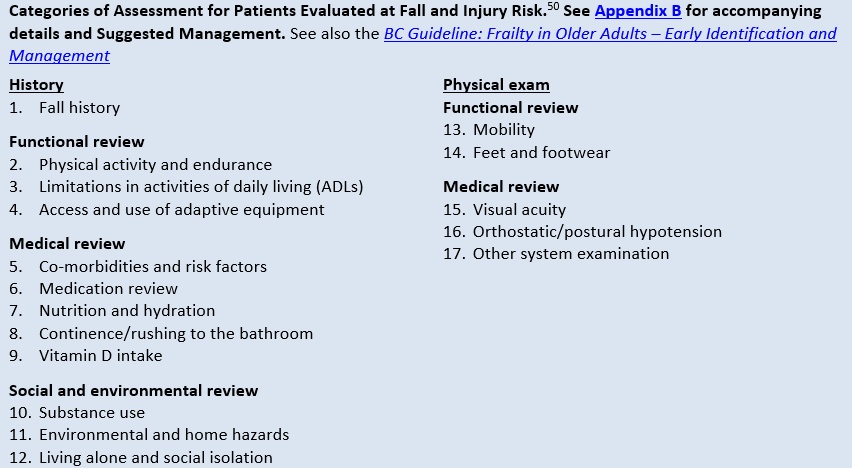The 15-Second Trick For Dementia Fall Risk
Table of ContentsTop Guidelines Of Dementia Fall RiskThe Buzz on Dementia Fall RiskA Biased View of Dementia Fall RiskThe Best Guide To Dementia Fall Risk
A fall risk assessment checks to see how most likely it is that you will certainly drop. It is mainly done for older grownups. The evaluation normally consists of: This includes a collection of questions about your total wellness and if you have actually had previous drops or problems with balance, standing, and/or strolling. These tools evaluate your strength, equilibrium, and gait (the way you stroll).Interventions are referrals that may decrease your danger of dropping. STEADI consists of three steps: you for your danger of dropping for your threat elements that can be enhanced to attempt to avoid falls (for example, equilibrium troubles, damaged vision) to reduce your threat of dropping by using efficient strategies (for example, supplying education and learning and sources), you may be asked a number of concerns consisting of: Have you dropped in the previous year? Are you stressed concerning dropping?
If it takes you 12 seconds or more, it might indicate you are at higher risk for a fall. This test checks strength and equilibrium.
Move one foot halfway ahead, so the instep is touching the large toe of your other foot. Move one foot fully in front of the various other, so the toes are touching the heel of your other foot.
Top Guidelines Of Dementia Fall Risk
A lot of drops happen as an outcome of multiple contributing variables; as a result, managing the danger of dropping begins with determining the variables that contribute to fall threat - Dementia Fall Risk. Some of the most pertinent threat elements consist of: History of previous fallsChronic clinical conditionsAcute illnessImpaired gait and balance, lower extremity weaknessCognitive impairmentChanges in visionCertain risky drugs and polypharmacyEnvironmental factors can likewise boost the threat for falls, including: Insufficient lightingUneven or damaged flooringWet or unsafe floorsMissing or damaged handrails and get hold of barsDamaged or poorly equipped equipment, such as beds, wheelchairs, or walkersImproper use of assistive devicesInadequate supervision of the individuals staying in the NF, including those that display hostile behaviorsA effective loss threat management program requires a detailed clinical assessment, with input from all members of the interdisciplinary team

The care plan should also next include treatments that are system-based, such as those that promote a risk-free atmosphere (proper lights, hand rails, get hold of bars, and so on). The efficiency of the interventions ought to be assessed occasionally, and the treatment plan modified as needed to show adjustments in the loss danger analysis. Implementing a loss threat administration system utilizing evidence-based best practice can reduce the frequency of drops in the NF, while limiting the potential for fall-related injuries.
How Dementia Fall Risk can Save You Time, Stress, and Money.
The AGS/BGS guideline advises evaluating all grownups aged 65 years and older for loss danger each year. This screening contains asking people whether they have actually fallen 2 or even more times in the past year or looked for medical focus for a fall, or, if they have actually not fallen, whether they really feel unstable when walking.
Individuals that have dropped as soon as without injury must have their equilibrium and gait reviewed; those with gait or equilibrium abnormalities must obtain extra analysis. A background of 1 fall without injury and without stride or equilibrium problems does check over here not call for more assessment beyond ongoing yearly fall danger testing. Dementia Fall Risk. A fall risk evaluation is called for as part of the Welcome to Medicare examination

The 7-Minute Rule for Dementia Fall Risk
Documenting a falls history is one of the quality indicators for fall prevention and management. A crucial part of threat analysis is a medicine evaluation. A number of classes of medications increase loss threat (Table 2). copyright medicines specifically are independent predictors of drops. These drugs have a tendency to be sedating, change the sensorium, and impair balance and stride.
Postural hypotension can typically be minimized by decreasing the dosage of blood pressurelowering drugs and/or stopping medications that have orthostatic hypotension as a negative effects. Use of above-the-knee assistance hose pipe and sleeping with the head of the bed boosted may additionally minimize postural reductions in blood stress. The advisable elements of a fall-focused physical exam are shown in Box 1.

A Yank time greater than or equivalent to 12 secs recommends high loss risk. Being unable to stand up from a chair of knee height without utilizing one's arms shows raised fall risk.